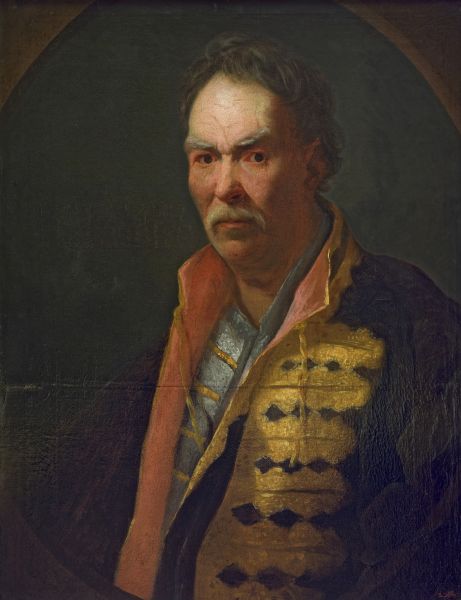|
|
Portrait of Field Hetman. 1720s (1726 or 1727 (?))

Nikitin Ivan,
Oil on Canvas
76 x 60
State Russian Museum
Annotation
In the nineteenth century, this portrait was commonly believed to depict a hetman — Ivan Mazeppa, Pavlo Polubotok, Ivan Skoropadsky or Daniil Apostol. In 1958, A. N. Savinov suggested that it depicted the Lithuanian hetman Count Casimir Jan Sapega, a fieldmarshal of the Russian army who lived in St Petersburg in the mid-1720s. It is very hard to say exactly who is portrayed in this work. The rank of field hetman inscribed on the portrait was more typical of Poland and Lithuania, where the positions of crown hetman (commander-in-chief) and field hetman (deputy commander-in-chief) existed in the early eighteenth century. In a conference at the Hermitage Museum in 1984, Sergei Androsov suggested that the work was actually a self-portrait.
Author's Biography
Nikitin Ivan
Nikitin, Ivan Nikitich
1680s, Moscow (?) - After 1741
Painter, portraitist. Son of a Moscow priest, brother of Roman Nikitin. Possibly educated at the Armoury School of Printing in Moscow. Lived in St Petersburg (from 1711). Studied under Tommaso Redi in Florence as a fellow of Peter the Great (1716-19). Returned to Russia (1720). Court portraitist (from 1721). Painted life portraits of Peter the Great on Kronstadt (1715-21). Married and divorced Maria Fyodorovna Mamens, lady of the bedchamber to Empress Catherine I (1727). Arrested in St Petersburg in connection with the libelling of Archbishop Feofan Prokopovich (1732). Spent five years in the Peter and Paul Fortress. Exiled to Siberia (1737). Released by the Privy Council (1742). Died on the way from Siberia to Moscow.

